#qebehsenuef
Text
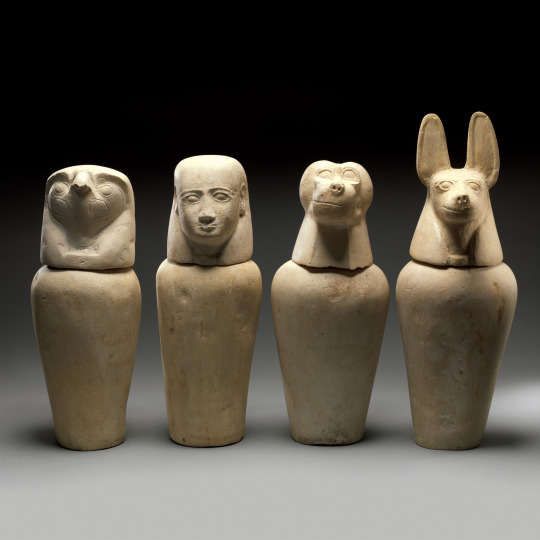
A set of four canopic jars was an important element of the burial in most periods of Ancient Egyptian history. Canopic jars were containers in which the separately mummified organs would be placed. The best known versions of these jars have lids in the shape of the heads of protective deities called the four Sons of Horus. The human-headed Imsety was the guardian of the liver; the baboon-headed Hapy looked after the lungs; the jackal-headed Duamutef was responsible for the stomach; and the falcon-headed Qebehsenuef cared for the intestines. Image by The Metropolitan Museum of Art.
Lean more / Daha fazlası
https://www.archaeologs.com/w/canopic-jar/
#archaeologs#archaeology#archaeological#dictionary#history#art#pottery#canopic jars#egypt#ancient egypt#mythology#the four sons of horus#horus#hapy#duamutef#qebehsenuef#imsety#arkeoloji#tarih#sanat#çömlekçilik#antik mısır#mısır#mitoloji
55 notes
·
View notes
Text
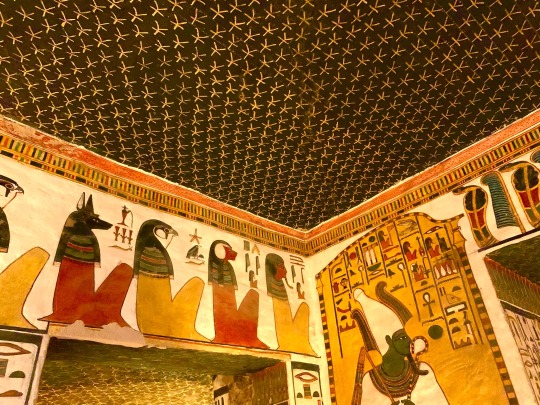
The four sons of Horus, (right to left): Imsety, Hapy, Duamutef and Qebehsenuef, above a doorway in the tomb of Nefertari.
8 notes
·
View notes
Text
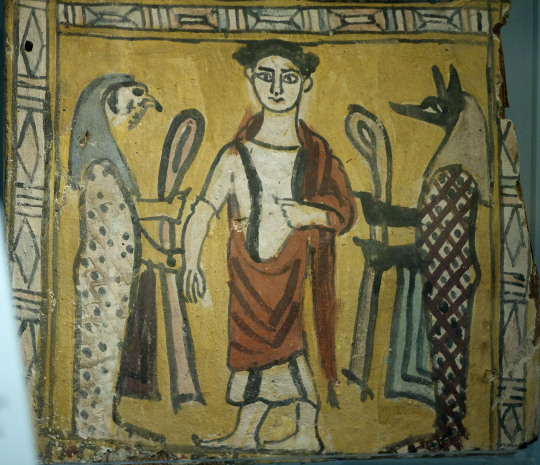
Duamutef and Qebehsenuef present linen to the deceased (who bears a certain resemblance to Benedict Cumberbatch) for his mummification. From a canopic chest at the Rijksmuseum van Oudheden, Leiden.
18 notes
·
View notes
Text



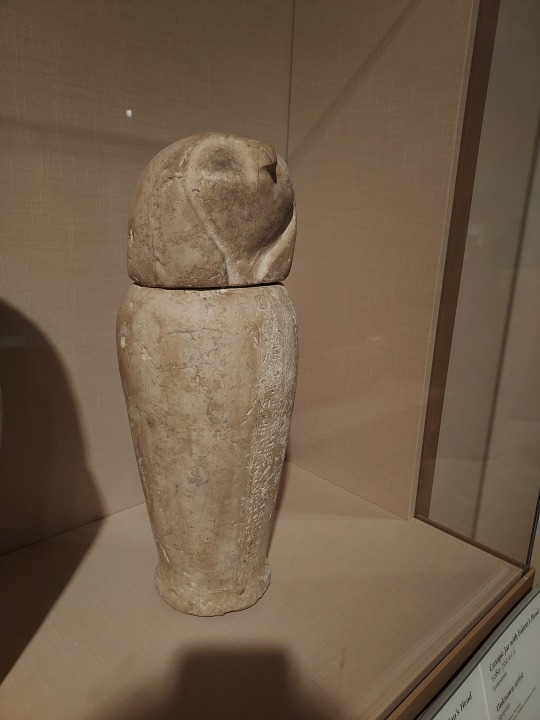
Canopic Jars, 1080-720 B.C.E
Limestone
Egyptian
------------------------------------------
Canopic jars were made to contain the organs that were removed from the body in the process of mummification: the lungs, liver, intestines, and stomach. Each organ was protected by one of the Four Sons of Horus.
Baboon (Hapy) - Held the lungs
Jackal (Duamutef) - Held the stomach
Human (Imsety) - Held the liver
Falcon (Qebehsenuef) - Held the intestines
-Description from The Met
7 notes
·
View notes
Text

Qebehsenuef, Protection of Horus
"If you control 'King's Sarcophagus', you can Special Summon this card (from your GY). You can only Special Summon 'Qebehsenuef, Protection of Horus' once per turn this way. If another card(s) you control leaves the field by an opponent's card effect, while this card is in your Monster Zone (except during the Damage Step): You can activate this effect; this turn, your opponent cannot target 'Horus' monsters on the field with card effects. You can only use this effect of 'Qebehsenuef, Protection of Horus' once per turn."
14 notes
·
View notes
Text
Day 20 Imity, Duamutef, Qebehsenuef, and Hapy

Day 20 Imity, Duamutef, Qebehsenuef, and Hapy
#divineharmony#sonofhorus #egyptianmythology #guardiansoforgans #afterlifeprotection #digitalart #akhtober #egyptian #deities #drawing #mythology #art #day20 #digitaldrawing #magic #pagan #witchcraft #illustration #simple #kemetic #firealpaca #artist #artistoninstagram #myart #dahkyarts #artistoftales #artistonig
#divineharmony#sonofhorus#egyptianmythology#guardiansoforgans#afterlifeprotection#digitalart#akhtober#egyptian#deities#drawing#mythology#art#day20#digitaldrawing#magic#pagan#witchcraft#illustration#simple#kemetic#firealpaca#artist#artistoninstagram#myart#dahkyarts#artistoftales#artistonig
49 notes
·
View notes
Text

I am. SO very close to finishing the introductory slides, but realized I had to fix two wee errors in this clusterfuck reference. Just like the last times, there's a written explanation under the cut qvq
Origin
Nu
[ Atum is fashioned by his parent Nu, but later separates into Amun and Ra ]
First Generation
Amun, first child of Nu and half of Atum
Mut, second child of Nu and Amun's wife
Ra & Apep, twins, third and fourth children of Nu (and, for Ra, half of Amun)
Ptah, fifth child of Nu
Khnum, sixth child of Nu
Thoth, seventh child of Nu
Neith, eigth child of Nu
[ Ma'at and Nehebkau are created by Ra's fire and Apep's blood respectively before the start of the second generation ]
Second Generation
Khonsu, son of Amun and Mut
Tefnut & Shu, twins, second and third child of Ra
Shezmu, born of Apep's blood
Ahti, born of Apep's spit
Babi-Astennu, born of Apep's seed
Hathor-Sekhmet, fourth child of Ra
Heqet, created by Khnum
Hapi & Satet, twins, fifth and sixth children of Ra, Satet is Khnum's wife
Bast, seventh child of Ra
Montu, eigth child of Ra
Third Generation
Anhur, ninth child of Ra
Ammit, born of Apep's bile
Geb, first child of Tefnut and Shu
Nut, second child of Tefnut and Shu, and wife of Geb
Mafdet, adopted by Ra (10th child)
Reshep, foreign god married to Qetesh
Anat & Astarte, twins, foreign goddesses adopted by Ra (11th and 12th children), both married to Set
Mehit, foreign goddess married to Anhur
Qetesh, goddess adopted by Ra (13th child), wife of Reshep
Nefertem, first child of Sekhmet and Ptah's relations
Maahes, second child of Sekhmet and Ptah's relations
Serket, first child of Neith and Khnum
Sobek, second child of Neith and Khnum
Fourth Generation
Min, child of Reshep and Qetesh
Anuket, child of Satet and Khnum
Osiris, first child of Geb and Nut
Horus-Ur, second child of Geb and Nut
Set, third child of Geb and Nut
Isis, fourth child of Geb and Nut
Nephthys, fifth child of Geb and Nut
[ Before the start of the fifth generation; Heka is created by Ma'at and Thoth, Khepri is created by Ra (14th child) and incubated by Thoth, and Hatmehit is created by Abtu the Fish swallowing then spitting out Osiris' penis (which was severed by Set) ]
Fifth Generation
Anubis, child of Osiris and Nephthys' affair
Horus (the Younger), child of Osiris and Isis, and reincarnation of Horus-Ur
Wepwawet, child of Neith and Set's affair
Tutu, child of Neith and a pre-Egyptian settlement hunter
Sixth Generation
Nekhbet & Wadjet, twins, 15th and 16th children of Ra
Kebechet, pupil and unofficially adopted daughter of Anubis
Ahephi, Imsety, Daumutef, & Qebehsenuef, quadruplets, the four sons of Horus and Hathor (via fling with the Elder, marriage with the Younger)
#lore posting#for every time you think this 'wow this is insane'#(which it is you're 10000% correct)#be just as glad as I am I only included the flings that resulted in children. otherwise there would be So Many Red Lines#*points @ Thoth- Isis- and Hathor-Sekhmet in particular*
10 notes
·
View notes
Photo




An Egyptian Alabaster Canopic Jar and Lid
26th/ 30th Dynasty, 664-342 B.C.
Of slender form with rounded shoulders, the lid in the form of the head of Qebehsenuef, protector of the intestines, wearing a wide enveloping wig, the feathered markings finely incised.
Height 42 cm.
#An Egyptian Alabaster Canopic Jar and Lid#26th/ 30th Dynasty 664-342 B.C.#archeology#archeolgst#ancient artifacts#history#history news#ancient history#ancient culture#ancient civilizations#ancient egypt#egyptian history#egyptian art
27 notes
·
View notes
Note
Hathor: Horus is a breeder
Horus: No I'm not!!!!
Thoth: You gave her 4 babies on your first try, that's something
this is freaking crazy.. and i didn't realise this when i first read this ask, but there is ACTUAL lore for this:

^^ a cute family pic of Horus' quadruplets, L-R: Imsety, Hapi, Duamutef, and Qebehsenuef.
i mean. it doesn't actually say they're quadruplets but i'm electing to imagine them to be quadruplets because it's infinitely funnier. also, it doesn't say if Hathor's their mother or not, but like. i don't really associate Horus with any other consort besides her, so im choosing to actually believe Anon is RIGHT, and yeah. Hathor and Horus have quadruplets.
also. something really cute i read about them is that all 4 boys are associated with particular organs during the process of embalmment (though it's not specified who's in charge of what) BUT they're also associated with 4 goddesses who are connected with the afterlife too- "usually Isis for Imsety, Nephthys for Hapy, Neith for Duamutef, and Serqet for Qebehsenuef" WHICH i think is super cute.
13 notes
·
View notes
Photo

The four sons of Horus were a group of four deities in ancient Egyptian religion who were believed to protect deceased people in the afterlife. Beginning in the First Intermediate Period of Egyptian history (c. 2181–2055 BC), Imsety, Hapy, Duamutef, and Qebehsenuef were especially connected with the four canopic jars that housed the internal organs that were removed from the body of the deceased during the process of mummification. Most commonly, Imsety protected the liver, Hapy the lungs, Duamutef the stomach, and Qebehsenuef the intestines, but this pattern often varied. The canopic jars were given lids that represented the heads of the sons of Horus. Although they were originally portrayed as humans, in the latter part of the New Kingdom (c. 1550–1070 BC) they took on their most distinctive iconography, in which Imsety is portrayed as a human, Hapy as a baboon, Duamutef as a jackal and Qebehsenuef as a falcon. The four sons were also linked with stars in the sky, with regions of Egypt, and with the cardinal directions.
The worship of the sons of Horus was almost entirely restricted to the funerary sphere. They were first mentioned late in the Old Kingdom (c. 2686–2181 BC), in the Pyramid Texts, and continued to be invoked in funerary texts throughout ancient Egyptian history. Their connection with the canopic jars was established in the First Intermediate Period, and afterward they became ubiquitous in the decoration of canopic chests, coffins, and sarcophagi. Although they were increasingly closely associated with the internal organs, they continued to appear in burial equipment even after the use of canopic jars was abandoned in the Ptolemaic Period (303–30 BC), disappearing only in the fourth century AD with the extinction of the ancient Egyptian funerary tradition.
https://en.wikipedia.org/wiki/Four_sons_of_Horus
0 notes
Photo

First finished piece of 2022, thought it would be appropriate for the 100th anniversary of the Tutankhamun-sparked Egypt craze
So here’s the balsamation squad
14 notes
·
View notes
Text
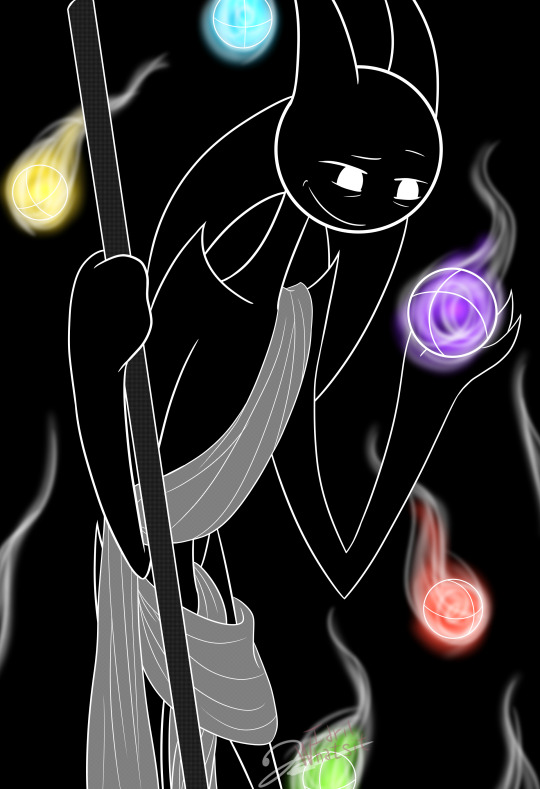


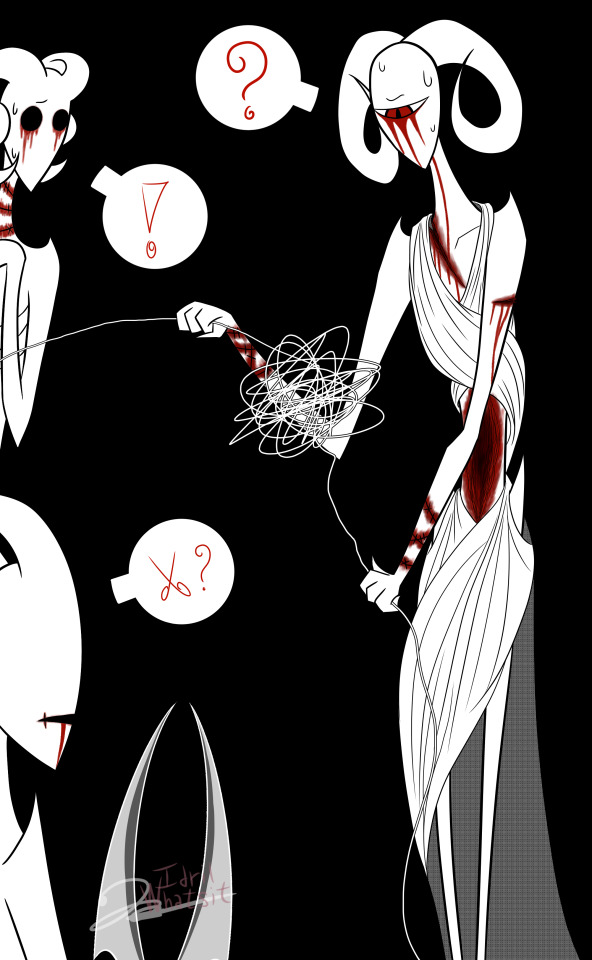
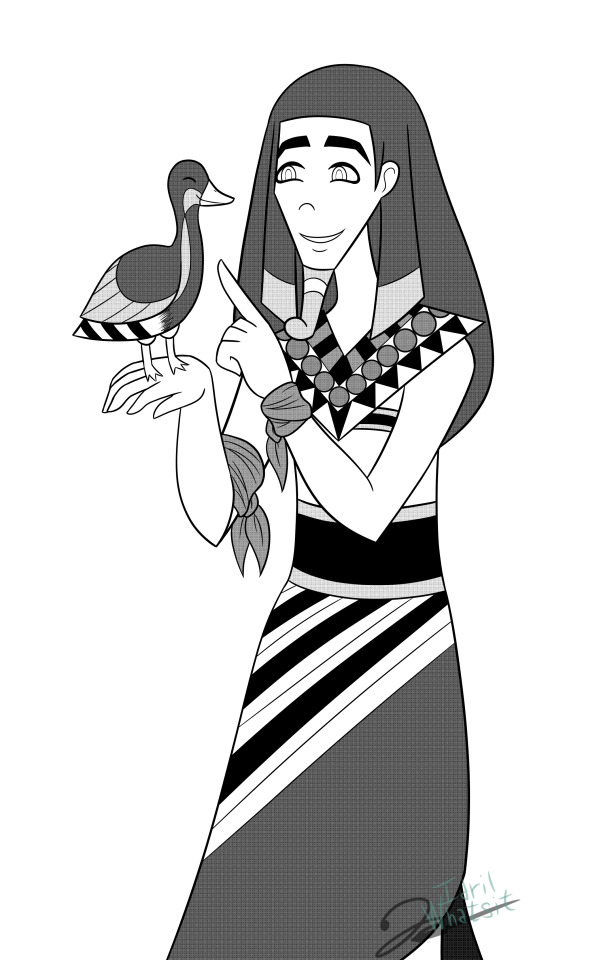


Pantheons InkWash 2021 - 1st Week
If you're unsure about what InkWash is and its rules, go here.
Day 1 - Crystal // Charon
"A soul is not unlike a crystal. If it is cracked or broken, it can't just be fixed. Not easily, at least. And marks will always remain after that...
This is why I always brings as many souls as possible to the other side at once. Unlike what most mortals believe, I need no obol. I appreciate the gesture, but I have no need for it..."
Day 2 - Costume // Hathor and Hera
Hera seems to like Hathor's dress a lot. All these complexe patterns look wonderfull. Though Hathor admits herself simplicity can be nice too. So she likes Hera's just as much.
Day 3 - Vessel // The Spirits of the canopic jars
Also known as the Sons of Horus, they are in charge of protecting the deceased's organs. Imsety, protector of the liver ; Duamutef, protector of the stomac ; Hapi, protector of the lungs and Qebehsenuef, protector fo the intestines.
(I'll be honest, except maybe for the last of the four, I don't really have much ideas on what kind of personality I could give them...)
Day 4 - Knot // The Fates
"... How did this even happen ?" asked Lachesis to her sisters.
"I swear it wasn't like that, earlier !" exclaimed Clotho, a bit panicked.
"You know," started Atropos, "maybe we should cut this short before the life tied to this thread gets tangled into whatever mess this knot might represent ?"
"No need," Lachesis affirmed, "I'm sure there is a way to undo this... Or at least, make it smaller..."
Day 5 - Bird // Geb (feat. Bheb)
You thought I'd just draw one or all of the bird-like egyptian gods, didn't you ? Nope ! Have Geb and his pet goose !
Yes, I made what is originally the hieroglyph on his head an actual goose, and she's his pet. You can't stop me ! BHEB IS A GOOD GIRL-
Day 6 - Spirit // Medjed
Boy oh boy... That rascal.
Not much is actually known about Medjed except that they are also know as "the Smiter" and can apparently... *checks wikipedia* shoot laser out of their eyes ??? (That's funny because I didn't know this when I made that drawing...)
But anyway, because of some play on the words in my own language (based on them being some kind of spirit AND a "smiter"), I have decreed they are some sort of poltergeist. A deified poltergeist that still can do good, but are very chaotic neutral in their behaviour.
Oh and of course, they like to look scary. (they don't usually show their teeth unless they want to look menacing.)
(I have imagined more about them but this entry is long enough already...)
Day 7 - Chill // Hermes and Anubis
They're besties and you can't convince me otherwise. I don't think I'd really be able to explain why I think that ! (Except from the fact that the greeks kinda associated Anubis with Hermes in some ways...)
And... Yeah. I can see them just chillin' together from time to time, especially since I see both of them as being rather laid back (Hermes more than Anubis, though).
They'd also hang out with Thoth too if it weren't for the latter being very busy and, most importantly, him not wanting Hermes anywhere near his study OR library.
If you know, you know...
||Second Week>>
#inktober 2021#doodlewash october 2021#InkWash#art challenge#First week#Pantheons#mythology#greek gods#greek mythology#egyptian gods#egyptian mythology#Charon#Hathor#Hera#canopic jars#Imsety#Duamutef#Hapi#Qebehsenuef#the fates#Clotho#Lachesis#Atropos#Geb#Medjed#Hermes#Anubis#Idril's art#tw gore#my art
3 notes
·
View notes
Text
Posted Cards Master List - 54.0
December 2023, 1st thru 19th
Noble Arms Museum
Overexaggeration
Purrely Sharely!?
Realm Resonance
Red-Eyes Black Meteor Dragon
Rescue-ACE Preventer
Revolution Synchron
Scrap-Iron Sacred Statue
Sentinel of the Tistina
Signal Warrior
Wheel Synchron
Signs of the Tistina
Sinful Spoils of Subversion - Snake-Eye
Sleipnir the Runick Mane
Small Scuffle
Split Mirror of the Underworld
Stardust Wurm
Storagepod
Superheavy Samurai Security
Synchro Forceback
Synchro Overtop
Synchro World
The Continuing Epic of Charles
The Cuckoo Commanded to Croon
Thelematech Clatis
Thestalos the Shadowfire Monarch
Tokusano Shinkyojin
Ultimate Bright Knight Ursatron Alpha
Unchained Soul Lord of Yama
Unchained Soul of Sharvara
Unchained Soul of Shyama
Ursarctic Polar Star
Vaylantz Wave - Master Phase
Veda Kalanta
Visas Amritara
You're Finished
Zuttomozaurus
Alpha Summon
Angelica's Angelic Ring
Arias the Labrynth Butler
Asset Mountis
Berfomet the Mythical King of Phantom Beasts
Burning Dragon
Canopic Protector
Card Scanner
Concours de Cuisine (Culinary Confrontation)
Cursed Bride Doll
Dark Hole Dragon
Diabellstar the Black Witch
Dreamland
Elder Entity Norden
Forbidden Apocrypha
Forbidden Trapezohedron
Old Entity Cthugua
Old Entity Hastorr
Outer Entity Azathot
Outer Entity Nyarla
Discordance of the Tistina
Divine Temple of the Snake-Eye
Duamutef, Blessing of Horus
Earthbound Servant Geo Gremlina
Embrace of the Tistina
Escapegoat
Exceed the Pendulum
Fallen of the Tistina
Fire Recovery
Full Armored Dark Knight Lancer
Full-Armored Xyz
Gaia Prominence, the Fierce Force
Gen the Diamond Tiger
Hapi, Guidance of Horus
I.A.S. -Invasive Alien Species-
Imsety, Glory of Horus
Infernal Flame Banshee
Ken the Warrior Dragon
King's Sarcophagus
Lil-la Rap
Loka Samsara
Magicians of Bonds and Unity
Mannadium Trisukta
Master Tao the Chanter
Miracle of the Supreme King
Nemleria Repeter
Nephilabyss, the Ogdoadic Overlord
Odd-Eyes Arcray Dragon
Ogdoadic Daybreak
Origami Goddess
Original Sinful Spoils - Snake-Eye
Pendulum Evolution
Pitknight Filly
Play of the Tistina
Poissonniere de Nouvelles
Qebehsenuef, Protection of Horus
Realm Elegy
Realm Eulogy
Red Arrows
Returned of the Tistina
Rose Papillon
Seed-Spitting Saplings
Sharv Sarga
0 notes
Text
The four sons of Horus: Imsety (or Imset, Amset... Audfufigi...), Duamutef, Hapi, Qebehsenuef (Qebeh)
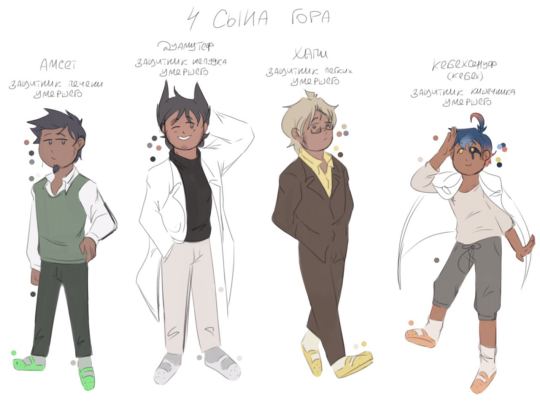
Horus with Qebehsenuef
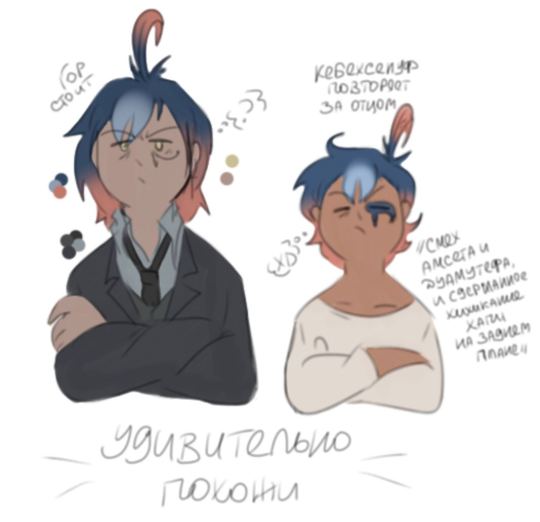
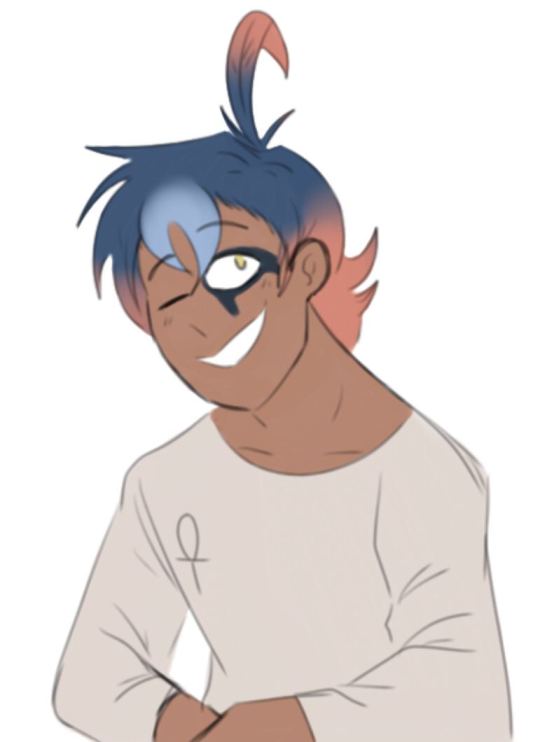
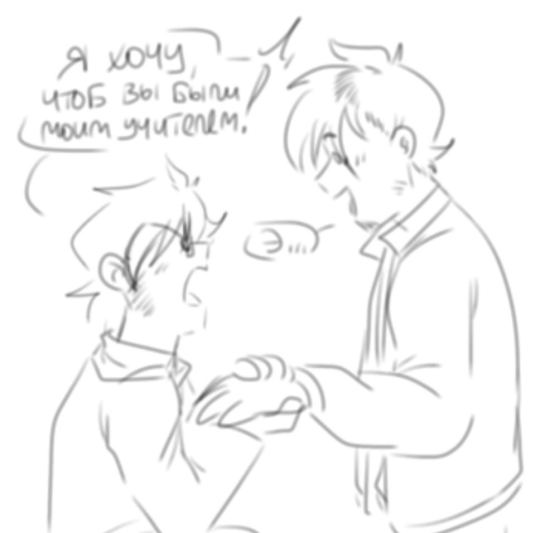
/Duamutef (son of Horus)/
- Excuse me, are you Mr. Smith's (Anubis's) son or brother?
- wat
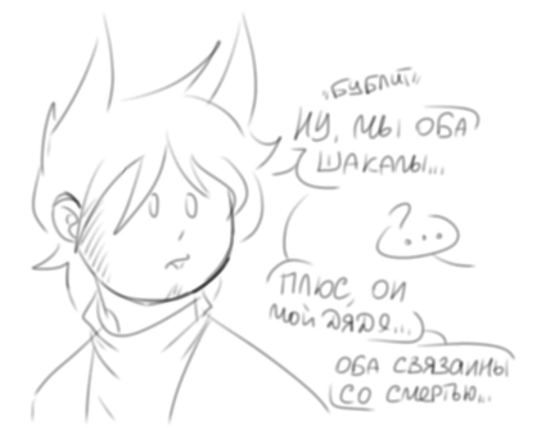
- Well, we're both a jackals...
- ?..
- Plus, he's my uncle... We're both are related to death...
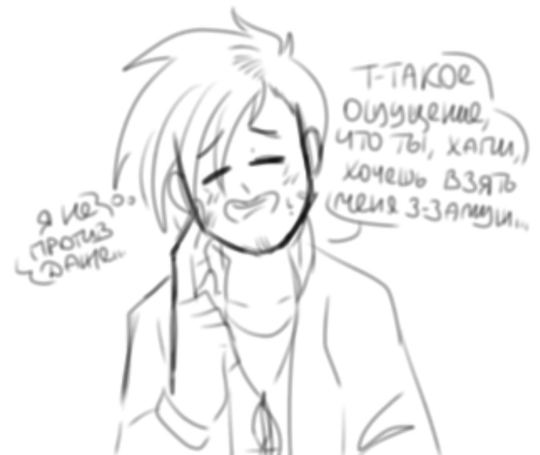
- I want you will be my teacher!
- Ah...

- It feels like you want to marry me, Hapi...
"I don't even mind..."
- Well, I'm agree ~

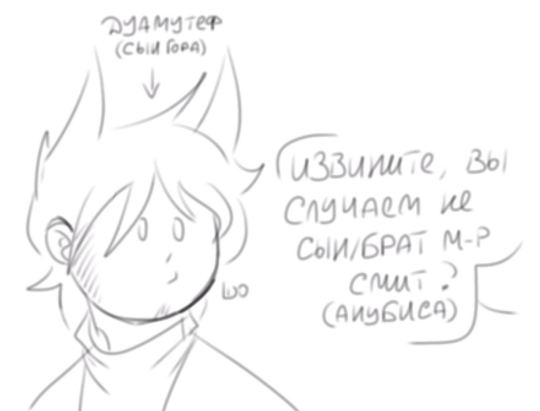
#ocs#oc#original character#original characters#egypt mythology#thoth#anubis#horus#four sons of horus#imsety#imset#duamutef#hapi#qebehsenuef
3 notes
·
View notes
Text

okay HOPEFULLY this will be the last revision, added the Four Sons and tried to tidy things up. Blah blah blah, zoom in if you like, written key below the cut-
First generation
Nu
Second
Amun, first of Nu's children and eldest of the second generation
Mut, second of Nu's, wife of Amun, and second eldest
Ra and Apep, twins, third of Nu's and third eldest
Ptah, fourth of Nu's and fourth eldest
Khnum, fifth of Nu's and fifth eldest
Thoth, sixth of Nu's and sixth eldest
Neith, last of Nu's seven children, wife of Khnum, and youngest of this generation
[ the demon-god Nehebkau is created when Ra wounds Apep, the Serpent's blood curdling the earth and spawning the first demon. All other demons were later created in similar fashions, if not with blood than bile, spit, mucus, or seed. ]
Third
Ma'at, first child created by Ra of himself and eldest of the third generation
Khonshu, only child of Amun and Mut, second eldest
Amentet, second child of Ra and third eldest
Tefnut and Shu, twins, wife and husband, third children of Ra and fourth eldest
Shezmu, born of Apep's blood, fifth eldest
Babi (later transformed into Astennu), born of Apep's seed, sixth eldest
Hathor (later transformed into Sekhmet then back), fourth child of Ra and seventh eldest
Heqet, daughter created by Khnum of himself and eigth eldest
Satet, fifth child of Ra, wife of Khnum, and ninth eldest
Bast, sixth child of Ra and 10th eldest
Montu, seventh child of Ra and youngest of this generation
Fourth
Geb, first child of Tefnut and Shu, eldest of the fourth generation
Nut, second child of Tefnut and Shu, wife of Geb, second eldest
Mafdet, eigth child of Ra (adopted) and third eldest
Ammit, born of Apep's bile, and fourth eldest
Anat and Astarte, twins, Canaanite, ninth children of Ra (adopted) and fifth eldest
Anhur, 10th child of Ra and sixth eldest
Qetesh, Semitic, 11th child of Ra (adopted) and seventh eldest
Menhit, Nubian, wife of Anhur and eigth eldest
Nefertem, first child of Sekhmet and Ptah and ninth eldest
Maanhes, second child of Sekhmet and Ptah and 10th eldest
Anuket, daughter of Khnum and Satet, 11th eldest
Serket, first child of Khnum and Neith, 12th eldest
Sobek, second child of Khnum and Neith, youngest of this generation
Fifth
Osiris, first child of Geb and Nut, eldest of the fifth generation
Horus-Ur (or Horus the Elder), second child of Geb and Nut, second eldest
Set, third child of Geb and Nut, third eldest
Isis, fourth child of Geb and Nut, wife of Osiris, fourth eldest
Nephthys, fifth child of Geb and Nut, wife of Set, youngest of this generation
5.5
[ these deities were created too long after the prior generation but too soon before the next, thus part of their own half generation ]
Khepri, 12th child of Ra, incubated by Thoth as the solar egg
Heka, creation of Ma'at and Thoth
Hatmehit, spat out by Abtu the fish after it ate Osiris' dismembered penis
Sixth
Anubis, son of Osiris and Nephthys, eldest of the sixth generation
Horus, son of Osiris and Isis, reincarnation of Horus-Ur, second eldest
Wepwawet, son of Set and Neith, third eldest
Tutu, son of Neith and an early mortal hunter, youngest of this generation
Seventh
Kebechet, apprentice of Anubis with a father-daughter esque relationship, oldest of the seventh generation
Xapi, Imsety, Duamutef, and Qebehsenuef, quadruplets of Hathor and Horus-Ur/the Younger, youngest of this generation
[ Weneg, the first (half) human Pharaoh and 13th child of Ra, and Imhotep, son of Ptah, are part of this lineage- but so much younger than even Kebechet due to their being demigods that there's not room on a single diagram to show the distance between those generations. ]
12 notes
·
View notes